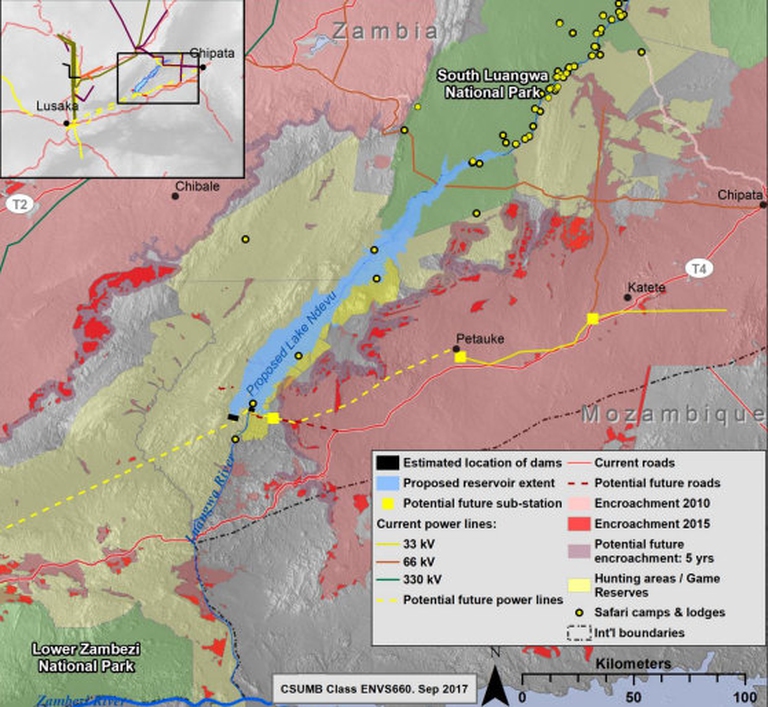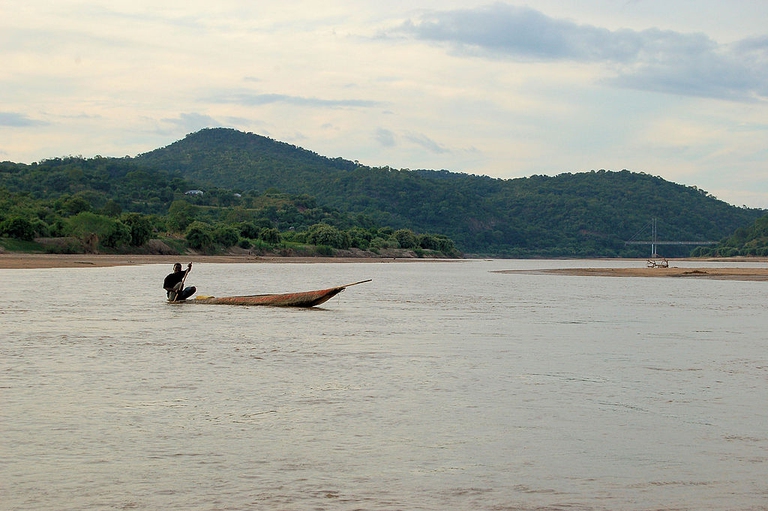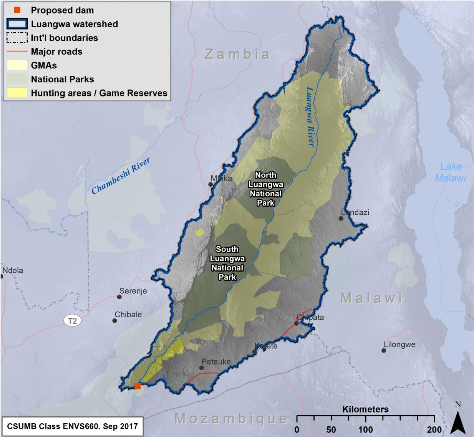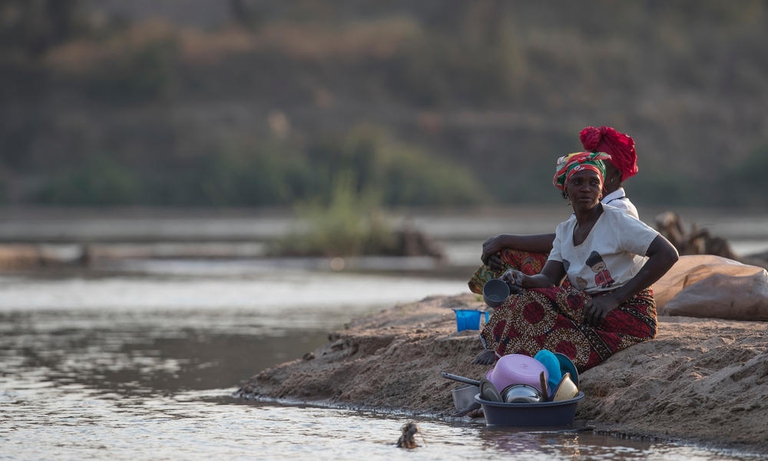
A group of experts in Tokyo suggested pouring radioactive water from Fukushima into the open sea. A marine biochemist explains the consequences of this absurd decision.
A large dam along the Luangwa River in Zambia would have posed a serious risk to local people and wildlife, leading hundreds of thousands to oppose it. A call to which the government responded by halting plans to build it.
The Zambian government has halted plans to build a proposed hydropower dam on the Luangwa river, after more 200,000 people signed the petition to preserve one of Africa’s longest un-dammed, free-flowing rivers. A South African firm, MDH Solutions had proposed to build the so-called Ndevu Gorge dam to generate electricity in the lower course of the Luangwa River in Zambia’s Eastern Province, around 200 kilometres away from the capital Lusaka. The project was estimated to generate 235 megawatt (MW) of hydroelectric power to meet the country’s growing demand for electricity, but conservation groups warned that it would cause a disaster by displacing thousands of people and causing far-reaching impacts on the area’s wider ecosystem.
Talk of building a dam in the lower course of the Luangwa River dates back to the early 1980s. Nevertheless, each time such plans were resurfaced by the authorities, they received such strong backlash that the idea would be quietly shelved. But in 2018, said plans had been formalised despite repeated calls to cancel them. Ironically, this followed the declaration three years ago of South Luangwa as the world’s first national park explicitly committed to sustainable tourism by the United Nations World Tourism Organisation.
The Luangwa Valley is home to several at-risk species also present on the International Union for the Conservation of Nature (IUCN)’s Red List. These include African wild dogs, grey crowned-cranes, African elephants, lions, leopards, hippos, Maasai giraffes (formerly known as Thornicroft’s giraffes) and black rhinos.
A study by California State University Monterey Bay entitled the Potential Impacts of the Proposed Ndevu Gorge Dam estimated that the dam wall would have been 80 metres high, creating a gigantic lake, 165 kilometres long and up to 17 kilometres wide, hold backing 47 cubic kilometre of water. The cost of the development was projected at a staggering 1.26 billion dollars, which the Zambian government was expected to borrow.
“The reservoir would inundate or alter parts of protected areas adjacent to the Luangwa River,” the report highlighted. “The reservoir would inundate 29.5 per cent of the length of the Luangwa River within South Luangwa National Park, at least six safari camps, and as much as 80 per cent of adjacent hunting areas. It would inundate portions of at least six chiefdoms adjacent to the river. The reservoir would inundate much of the length of the Luangwa that these protected areas, hunting areas and chiefdoms currently have access to. It would also reduce the area of valuable wildlife corridor between South Luangwa National Park and Lower Zambezi National Park — which is already bounded by human encroachment on either side of the river — by 50 per cent of its length and 24 per cent of its width”.
In addition, senior traditional leader chief Lumbe of the Nsenga people said the planned dam would have caused severe floods, disturbing communities and wildlife in his chiefdom. Despite the developer’s promises of economic opportunities and access to electricity, Lumbe remained adamant in warning that even those local communities and chiefdoms not directly flooded and displaced may still not have benefitted from the dam.
“I think keeping the Luangwa river free flowing is the best decision for both people in my chiefdom and nature, and we salute the government for stopping the construction of the infamous dam. It is perhaps time for the authorities to seek lower impact, renewable alternatives to power Zambia’s development,” he advised.
Read more: Inga 3, the world’s largest dam will displace tens of thousands in DR Congo
The World Wide Fund (WWF) in Zambia launched a petition addressed to President Edgar Chagwa Lungu, urging him to declare the Luangwa River a Water Resource Protection Area, under threat from the proposed dam. “An incredible 200,000 people have backed our calls by signing a petition and we hope that the government’s decision to halt plans for a dam will now pave the way for legal protection,” WWF wrote on its website.
“Modifying the flow of rivers through activities such as building a dam would adversely interrupt their connectivity. This interruption then disrupts the lives and activities of people, industries, wildlife and fish that depend on it,” said Nachilala Nkombo, WWF’s Country Director.
Good news! The Zambian government has halted plans to construct a hydropower dam across the Luangwa river, safeguarding the benefits the river provides to people and nature. We’re thankful to the nearly 200,000 WWF supporters who helped make this possible. https://t.co/252v1AsLgW
— World Wildlife Fund (@World_Wildlife) 26 giugno 2019
Nkombo advised the government to adopt a sound energy planning process that takes into account all sources, especially those with the least impact on existing economies and ecosystems, adding that the right dams must be built on the right rivers. Such proposals are backed up by a joint study by the WWF and environmental organisation The Nature Conservancy released last month, which highlight how countries can build a future powered by low carbon, low-cost and low-conflict energy grids thanks to the renewable revolution.
In the 1950s, the Kariba Dam was built in Zambia and Zimbabwe to provide water primarily for hydropower production. But the Tonga and Korekore people, who once inhabited the banks of the Zambezi River, had their area turned from a river into a reservoir.
Read more: Kariba, world’s largest man-made dam on the brink of collapse
“Entire villages were flooded, displacing more than 60,000 indigenous people and 6,000 animals – Thayer Scudder, Anthropology Professor Emeritus at the California Institute of Technology, highlighted in a report –. The affected communities were given little information about the dam and no choice but to move. This is still known as the worst dam-resettlement disaster in African history”.
Presumably, such a dark episode has allowed people and the authorities to carefully reflect on the vital question of how to power Zambia’s future energy needs, with the resulting decision to avoid sacrificing its people and natural heritage.
Siamo anche su WhatsApp. Segui il canale ufficiale LifeGate per restare aggiornata, aggiornato sulle ultime notizie e sulle nostre attività.
![]()
Quest'opera è distribuita con Licenza Creative Commons Attribuzione - Non commerciale - Non opere derivate 4.0 Internazionale.
A group of experts in Tokyo suggested pouring radioactive water from Fukushima into the open sea. A marine biochemist explains the consequences of this absurd decision.
A federal court in Washington, D.C. has struck down the Dakota Access Pipeline, following years of campaigning by the Standing Rock Sioux tribe.
The Scottish island of Eigg is self-sufficient for its energy needs, relying almost entirely on renewable sources, especially thanks to a coordinated community effort.
President Magufuli in unmovable in going ahead with the Stiegler’s Gorge dam despite conservationists’ warnings of the damage it will cause the Selous Game Reserve’s ecosystem and wildlife.
The first one megawatt solar power plant in the Chernobyl exclusion zone has become operational. This is the first step in a renewable energy development project promoted by the Ukrainian government in the area.
A tanker exploded at a gas and petrol station in Nigeria’s Nasarawa state on the 10th of September, killing 35 people and leaving some burned beyond recognition; 3 citizens had several spine and brain injuries, 2 of them are still on Intesive Care Units. Fela Habila , a local singer, is now stable and out of danger but
The largest tidal power plant in the world will be built in the Larantuka Straits. It will serve 100,000 people and help overcome some of the challenges of energy provision in Indonesia.
Robben Island’s solar energy micro-grid project will produce almost one million kilowatt hours of electricity annually, significantly reducing the cost and impact of buying diesel.
The Balikpapan oil spill off the coast or Borneo in Indonesia covers 120 square kilometres. It has caused the death of 5 people, health and economic problems for local communities, as well as threatening wildlife and local ecosystems.











